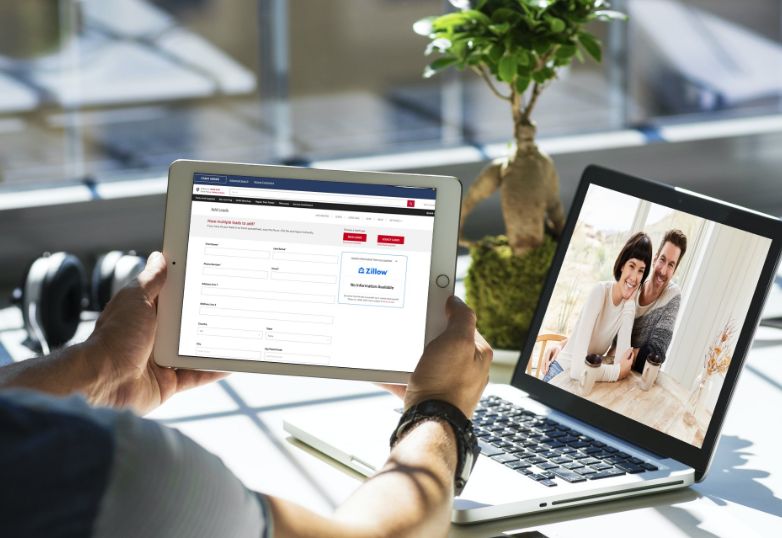
Meagan Wilson
May 2021 • 5 min read

Brian Kremmel
SME
If there’s one word that describes what proactive businesses did in 2020, it’s probably “adapt.” You adapted your safety protocols, office staffing, residential service procedures, and sales processes. And you survived, even thrived.
Not every change we saw in 2020 is likely to become permanent (thank goodness), but some shifts may remain. Due to social distancing and “safer at home” types of guidance, millions of consumers turned to online shopping for everyday needs – such as groceries. Data from Insider Intelligence indicates that 55% - 66% of U.S. consumers will adopt online grocery ordering by 2024. What does that have to do with HVAC? Your customers have grown used to receiving services online that were previously in-person transactions.
Even without serious health concerns, matching up schedules and taking evening or weekend time to meet with a comfort advisor can be quite inconvenient for homeowners. If you’re not already running some of your residential HVAC sales calls remotely, consider that doing so could help you to get in front of more customers, especially tech-savvy homeowners who are used to virtual meetings.
If you’re considering virtual sales calls, here a few best practices to keep in mind.

Have a good sales process
Any business looking to implement virtual sales calls needs to have their in-home sales process down.
- Know your KPIs. To measure the effectiveness of virtual sales calls, you need to have your success metrics in place.
- You need to be able to present pricing more quickly than in person, so it’s a good idea to have your price book in an electronic format so your comfort advisors can easily customize proposals. The Lennox Proposal Builder is one such tool.
- Migrate your presentation book to a PDF or PowerPoint format that can be viewed in landscape mode. PowerPoint or a similar presentation builder is probably best for this because it’s easy to update as needed, and you can include videos and speaker notes.
- You don't have to have your whole team set up to do virtual sales calls. Have some ideal candidates in mind who are already “go-getters” and comfortable with the idea of meeting with customers virtually, rather than in-person.
- Don't expect failure, and address challenges as you would in a regular appointment. If you have team members who think this is impossible, they're already right. Use the people who are willing to commit and improve the process.
- While closing in one visit is ideal for in-person appointments, be open to a two-visit closing process for virtual calls. Homeowners are likely to lose patience with a virtual call that lasts 90 minutes to two hours, so it’s better to have a couple of shorter appointments.

Technology considerations
- While this is not a “must,” it’s very useful to have a tablet available to use as a “sidecar” and a stylus to use with it. The tablet can function as a secondary display, or even a camera, and the stylus is great for adding notes or marking up photos during the sales call.
- Implement DocuSign or a similar software, so customers can sign the contract online. Alternately, you can have the installers bring the contract for the homeowner to sign before starting the work.
- Choose a software that's easy to use and record to the cloud. One such tool is Zoom. Many people find it easy to use, and it allows users to display images on a second camera or use a tablet as a sidecar to show secondary items during the call.
- If you’re not a fan of cloud storage, recording locally is fine. Keep in mind that you’ll lose the recording if your computer crashes or you close the device before you’ve finished and saved the recording. Either way, make sure you can share the recorded session with your customer.

Technology considerations
- Set pre-appointment expectations. If you’re running the virtual call for social distance reasons, it’s good to let the homeowner know you’re running the call virtually out of concern for their safety.
- Provide a checklist of the points that you’ll be going over in the call, and let the homeowner know you’re going to be recording the session.
- Let the homeowner(s) know they’re welcome to take notes or screenshots, but they don’t have to. Record the session and have it available for the homeowner to review at their leisure (for at least a week or so).
During the call
- Do a one-call meet and greet. Adjust your expectations for appointment length, so you and your customers can avoid virtual meeting fatigue.
- Talk to the homeowners about what they're looking for and how you can help them.
- Decision Analyst data published in the American Home Comfort Study (2016, 2019), indicated that pre-pandemic, the internet was homeowners’ top source of information prior to making an HVAC purchase, especially if the decision was planned. Don’t leave it up to random online sources to inform your customers about pricing. Include at least some broad estimates in this initial conversation.
- Have compassion for your customers. The need to replace an HVAC system is stressful for most people. Since a new HVAC system is a purchase that most homeowners make once, sometimes twice in a lifetime, it’s likely to be a new experience for whoever you’re talking with.
- Ask the homeowner to walk around the home and take pictures of the HVAC equipment and any spaces in the home that are uncomfortable (hot/cold spots, etc.). Tablets work well for this, if the customer has one. A laptop is your second-best option, and since they’re stationary, uploading and sending photos with a desktop is the third option. Due to the small screen size, a smartphone isn’t ideal for this step.
After the call
Follow up as you normally do, either by delivering an outstanding install, or checking back periodically to see if the homeowner is ready to make a purchase. Following up on installs can be fun. If the homeowner wants to, you could do a smartphone video call (using Facetime, or something similar) during or after the install. The main point here is to ensure your customers are happy with the project and ask if they’re open to sharing their positive experience with others.
Give customers what they want
From doctor visits to groceries, to virtual real estate tours, online options for services we need are continuously expanding. Beyond the pandemic, many homeowners may still find virtual meetings present an easier and more convenient method for residential HVAC consultations. This won’t be every comfort advisor’s style, nor will every customer prefer this option. By offering the choice of a virtual sales call, you put the customer in control from the beginning of the relationship, and it’s another way to differentiate your company from competitors who are, perhaps, less willing to adapt in a technologically-driven world.
For more on a consistent and repeatable sales process, communicating with homeowners, showing customers the indoor comfort possibilities and empowering them to make the decision, check out our Master $elling® program.
To access the schedule, please login to your Lennox Pros account.
